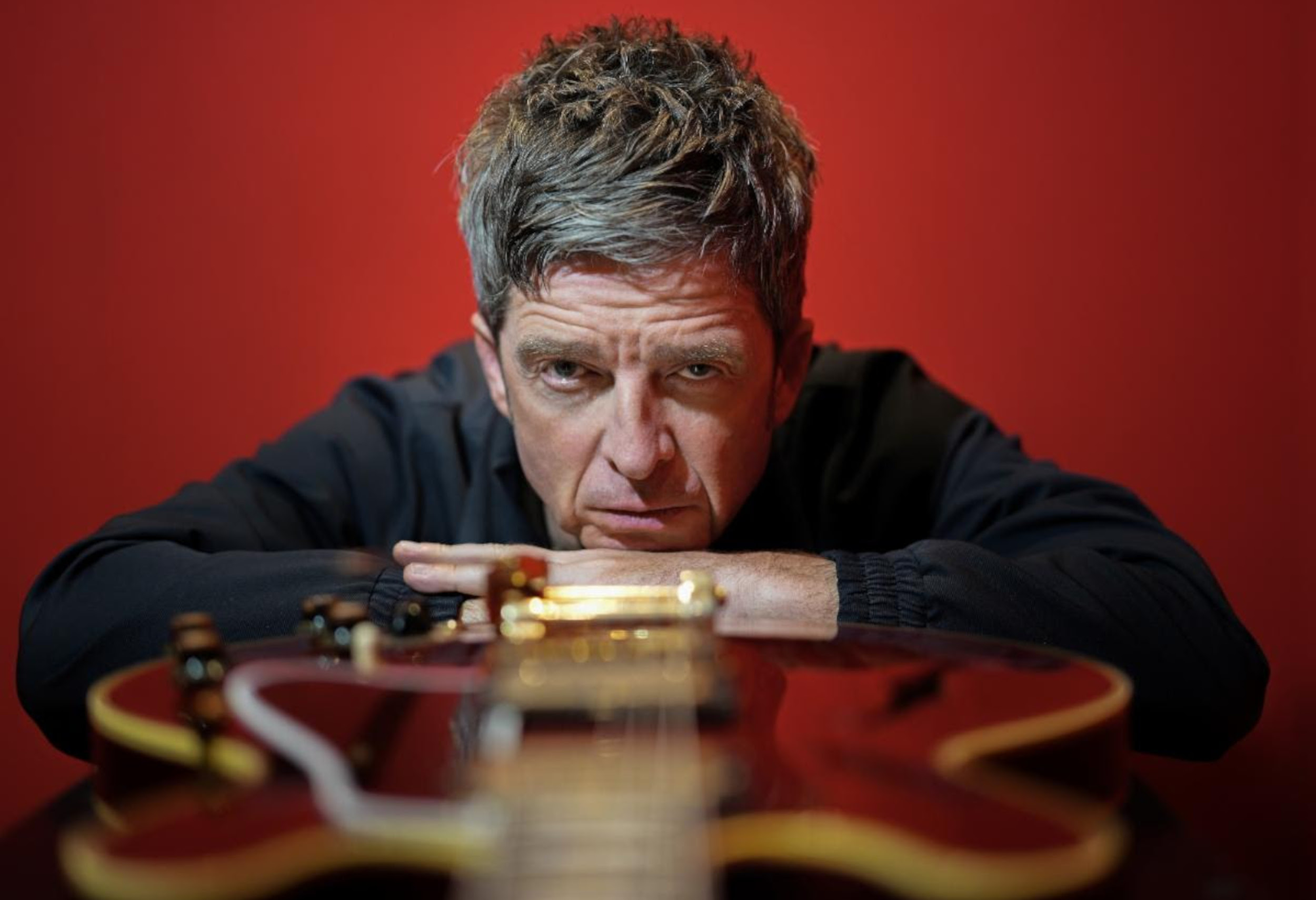
For decades, having a signature guitar was reserved for classic rock legends — the Claptons, the Hendrixes, the Pages, the SRVs and EVHs. But that’s no longer the case. From pop-punk to heavy metal, alt-country to neo-soul, modern artists of all genres and backgrounds are getting signature guitars from companies big and small.
Among the titans of the industry, that intentional shift came with a new generation being put into decision-making positions.
“When I started, it was largely classic rock and very much a pantheonic Hall of Fame,” Fender’s Executive VP for Products Justin Norvell says of the early 2000s. “It was an end-of-an-iconic-career kind of thing. But it was my feeling that it should be something that people can use to reflect back upon themselves. A Telecaster can mean James Burton, but it can also mean Brad Paisley or Jim Root from Slipknot. It can mean Joe Strummer or Jim Adkins from Jimmy Eat World.”
Some of the first “new” Fender artists under Norvell’s team were Tom DeLonge, Sonic Youth, J Mascis, Billy Corgan, and Kurt Cobain — not exactly the youngest rising stars, but a far cry from the big names of the ‘70s.
“We were not seeing the type of representation that we want — not only with the diversity of genres, but the diversity of musicians we were endorsing through signature models,” says Mat Koehler, Gibson’s senior director of product development. “There was a changing of the guard at Gibson a few years ago, and we had a lot more creative control. The entertainment relations wing of Gibson just did an outstanding job trying to cover a lot of ground with genres and diversity of musicians.”
In addition to the added diversity, the new lineup of artists for guitar behemoths like Fender and Gibson changed what a “signature” instrument means. It no longer has to be an iconic axe made famous by a music video or live show, but just something that represents the artist in a relatable way. Whether that means a $10,000 custom shop release or a $199 entry-level model, the new generation of signature guitars is a much wider range than the traditional “blues dad” options and overwhelming price points of the past.
“The whole reason for these signature models is we want to hone in on what makes that artist unique through the instrument,” Koehler says. “Sometimes that leans more on aesthetics, and sometimes it leans more on the tone features. But the goal definitely is to produce something at the end of the day that the artist feels like represents them.”
“We want to honor our past, but we want to look forward,” Norvell adds. “Music changes, and the way people make music changes. There are less people playing together in a garage with amps cranked, and more people recording and sending things back and forth. We want to make tools for people to write the next ‘Smells Like Teen Spirit’ on. Signature models help with that aspiration, but also just show people what’s possible on our platforms and that you can make all different genres of music. We feel that’s really important, because it showcases what’s possible on our instruments. It’s not just a heavy metal guitar or a classical or jazz guitar — it’s for genres that haven’t been created yet.”
From Fall Out Boy to Tool to The Roots, here are 30 of SPIN’s favorite signature guitars for modern artists. – Josh Chesler
Tosin Abasi (Animals as Leaders) – Abasi Concepts emi Series
[embedded content][embedded content]
Few guitarists can shred and pummel with the precision of Tosin Abasi, the expanded-string virtuoso from prog-metal act Animals as Leaders. Even fewer have the personal charisma to lead their own instrument brand. Years after pairing with Ibanez for an eight-string run, Abasi has become one of modern guitar’s most active entrepreneurs: At NAMM 2022, he showcased a new collaboration with Ernie Ball Music Man, the Kaizen, and the sleek emi series with his own Abasi Concepts. “This is the next step in the evolution for us,” he told Premier Guitar of the double-cutaway axe, which features a floating tremolo system, and his signature Fishman pickups. Riffs, sadly, not included. – Ryan Reed
Jim Adkins (Jimmy Eat World) – Fender JA-90 Telecaster Thinline
[embedded content][embedded content]
Jim Adkins is behind some of the catchiest pop punk riffs of all time, so it makes perfect sense that he’d have his own signature Telecaster. The JA-90 is not flashy, but rather a classic-looking guitar modeled after the TC-90 Tele he used to write the Jimmy Eat World hits, though with some modifications to sound even better while playing to thousands of fans on tour. Adkins told Guitar World that, even though he owns the guitar in various colors, each one fits a specific purpose: The red one is for “songs that we tune a half-step down, because for some reason we wrote a bunch of songs where we tune a half-step down. It seemed like a good idea at the time. And I have one that is in open-E tuning that we have for some of our older songs.” – Tatiana Tenreyro
Billie Joe Armstrong (Green Day) – Epiphone Les Paul Junior
[embedded content][embedded content]
Green Day has one of pop-punk’s most intriguing career trajectories. They expanded the juvenile two-minute songs of Kerplunk and Dookie into the sweeping rock-opera anthems of American Idiot and 21st Century Breakdown, nabbing a Broadway production and their own Rock Band game in the process. Frontman Billie Joe Armstrong’s signature Epiphone reflects that stylistic duality. Without too many bells and whistles to feel intimidating to new players, the Les Paul Junior is equally suited to infectious pop-punk like “She” and sprawling epics like “Jesus of Suburbia.” – Grant Sharples
Tim Armstrong (Operation Ivy, Rancid) – Gretsch G5191BK / Fender “Hellcat” Acoustic
[embedded content][embedded content]
Death, taxes, everyone agreeing that Operation Ivy is good: These are life’s only constants. Even people who don’t like ska can appreciate these East Bay pioneers of ska punk, much of it because of Tim Armstrong’s incredible sense of rhythm. Here, his solos are his melodic rhythm playing. Rancid and Armstrong’s other following projects continue his refinement of ska and punk, earning him not one but two signature guitars: a Gretsch Electromatic Hollow Body and an acoustic Fender “Hellcat.” Who knew acoustic Fenders could be so fun? – Brady Gerber
Jerry Cantrell (Alice in Chains) – Epiphone “Wino” Les Paul Custom
[embedded content][embedded content]
Among the original breakout class of ‘90s Seattle grunge, Alice in Chains might have had the best riffs, thanks to guitarist and songwriter Jerry Cantrell. In 2006, this was made official: The Metal Hammer Golden Gods Awards officially named Cantrell “Riff Lord,” beating out Slash, James Hetfield, and Jimmy Page. Even for those who don’t like spooky grunge or heavier ‘90s alternative rock, Cantrell’s simple yet metal-like sense of melody has aged better than most flannel. “Nutshell” is a song both Phoebe Bridgers and Deafheaven could and want to cover. Cantrell’s dark wine-red Epiphone “Wino” Les Paul model is also among the most beautiful guitars on this list. – B.G.
Stephen Carpenter (Deftones) – ESP SCT Baritone Models
[embedded content][embedded content]
Deftones guitarist Stephen Carpenter is a master of mood and atmosphere who understands delicate moments and gargantuan tones. The tender tension in songs like “Digital Bath” and “Urantia” has defined his band with the tenet that a whisper can be just as jarring as a scream. That’s why his signature baritone models deliver rich stentorian resonance and intimate tunings that simply feel private. The various eight-string models have the classic guitar shape (no BC Rich-sanctioned, kung fu throwing-star-posturing here, friends) that looks proper but delivers much more sonic purpose and promise than the parade of newcomers gathering millions of YouTube views in search of endorsement deals. Accept no substitutes. – Jason Pettigrew
Kurt Cobain (Nirvana) – Fender Jaguar
[embedded content][embedded content]
Kurt Cobain wasn’t a technical virtuoso. He was famous for playing a right-handed guitar in a left-handed style, and his songs’ simple instrumentals often belied their unerring depth. Despite his lack of traditional proficiency, Cobain is one of the greatest songwriters and guitarists of all time. With three Nirvana classic albums to his name, he epitomized the grunge boom that rose to prominence in the early ‘90s. Just as famous was the 1965 Jaguar he played, which Fender has recreated with fastidious attention to detail. His signature model features DiMarzio humbucking pickups to help evoke the noisy thrash of songs like “Territorial Pissings” and “Scentless Apprentice.” Its engraved neck plate even includes Cobain’s rendition of the Fender logo that he frequently drew in his journals. – G.S.
Billy Corgan (The Smashing Pumpkins, Zwan) – Reverend Z-One
[embedded content][embedded content]
Part of what makes The Smashing Pumpkins so compelling is how they blend wistful melodicism and heavy riffage. There’s also the fact that Billy Corgan, the man behind delicate alt-rock ballads like “Disarm” and “Cupid de Locke,” can shred. (At one point, he had such an abundance of stellar guitar riffs in his toolbelt that he threw over 50 of them away on the infamous 23-minute B-side “Pastichio Medley.”) Although Corgan has numerous signature Reverend guitars, his Z-One is the most accurate emulation of the Pumpkins’ heavier, meatier riffs, like those on “The Everlasting Gaze” and “Jellybelly.” Because of its alder body and Railhammer Z-One pickups, Corgan’s Z-One represents the many indelible riffs in the Pumpkins’ oeuvre. – G.S.
Britt Daniel (Spoon, Divine Fits) – Fender Tele Thinline
[embedded content][embedded content]
Over their decades-long career, Spoon remain one of indie-rock’s most excellent bands. And a vital part of that consistency lies in frontman Britt Daniel’s adaptable guitar tone, which ranges from a dense crunch (Ga Ga Ga Ga Ga opener “Don’t Make Me a Target”) to a staccato bite (Gimme Fiction hit “I Turn My Camera On”). Daniel’s signature Fender Tele Thinline captures this impressive versatility. Featuring a semi-hollow body with Custom Shop single-coil pickups (a vintage-style, Hand-Wound bridge pickup and a Texas Special neck pickup), the Austin native’s sleek guitar encompasses a wide gamut of tones conducive to many different playing styles. – G.S.
Tom DeLonge (Blink-182, Angels & Airwaves) – Epiphone ES-333
[embedded content][embedded content]
Although he spends much of his time conducting alien research now, Tom DeLonge once played in one of pop-punk’s most ubiquitous bands. As one-third of San Diego delinquents Blink-182, DeLonge often positioned himself as the serious one (as serious as you can be while indulging in a potent dose of potty humor), citing hardcore acts such as Fugazi and Refused circa 2001’s Take Off Your Pants and Jacket. Whereas his earlier days with the trio leaned toward simple chord progressions, his style developed on Blink’s 2003 self-titled LP and in his galactic-rock side project, Angels & Airwaves. From 2008 to 2012, DeLonge wielded the Epiphone ES-333, featuring a semi-hollow maple body that lent a spacious resonance to his music from that point forward. It’s a fitting model for a man who has since become infatuated with the great unknown. – G.S.
“Captain” Kirk Douglas (The Roots) – Gibson SG
[embedded content][embedded content]
“Captain” Kirk Douglas is one of the hardest-working guitarists in music today, pulling double duty with The Roots both at their own concerts and as the house band on Jimmy Fallon’s NBC late night show. His custom Inverness green Gibson SG — which allows for multiple pickup and volume controls simultaneously — is versatile enough to shift effortlessly from backing Bruce Springsteen one night and Frank Ocean the next. As for Douglas’ 1961 Epiphone Crestwood that Prince destroyed live on camera in 2013 in an act of incomprehensible churlishness? The less said about that incident, the better. – Jonathan Cohen
Noel Gallagher (Oasis, Noel Gallagher’s High Flying Birds) – Gibson J-150
[embedded content][embedded content]
The former Oasis songwriter has been inseparable from his Gibson J-150 acoustic since he first featured it in the band’s 2002 “Little by Little” video. This extremely limited-edition custom model introduced in 2021 is something of a holy grail for anyone who’s tried busking “Live Forever” and “Wonderwall” after three too many beers at the pub. (You’ll have to attach your own Adidas sticker, which Gallagher’s daughter affixed to the original when she was a child.) Gallagher is a formidable electric guitarist in his own right, and indeed, both Gibson and Epiphone have just released signature recreations of electrics he has prominently used. But much like his hero John Lennon, Gallagher’s acoustic chops remain at the root of Oasis’ most enduring songs. – J. Cohen
H.E.R. – Fender Stratocaster
[embedded content][embedded content]
Halfway to EGOT status, 25-year-old R&B artist H.E.R. has well-surpassed guitarists who boast decades of experience. In 2017, the singer-songwriter released her eponymous, Grammy-winning compilation album and has since become the choice guitarist in performances honoring Elton John, Prince, and others. H.E.R., real name Gabriella Sarmiento Wilson, evokes passion in her intricate technique, similar to her idol Lauryn Hill. From once being a child musical prodigy to having a signature chrome-painted Fender Stratocaster electric guitar in adulthood, H.E.R. further proves that Black women can shred too. – Jaelani Turner-Williams
Mårten Hagström and Fredrik Thordendal (Meshuggah) – Ibanez M80M
[embedded content][embedded content]
Was it really a coincidence that Ibanez assigned “M80” as a model number to this signature Meshuggah guitar? You know, like the famous M-80 firecracker that takes a few fingers off clumsy celebrants every July 4? Anyone familiar with the Swedish axe team of Mårten Hagström and Fredrik Thordendal knows that they’re capable of anything from G-force velocity (Contradictions Collapse) to perplexing reinvention (the no-wave, free jazz, and thrash synergy of Chaosphere) to straightforward power-grooving (Nothing). While recording that latter album 20 years ago, the prototype eight-string guitars they had commissioned by another manufacturer didn’t make the cut. Ibanez stepped up to the challenge to build eight-strings for the duo, heavily reinforced to handle the bowel-churning lows and jackhammer-like highs that are the band’s stock-in-trade. With this year’s Immutable, Meshuggah have expanded their sense of self and the sound frequencies it takes to do it. – J.P.
Brent Hinds (Mastodon) – Epiphone Brent Hinds Flying V Custom
[embedded content][embedded content]
In the mid-2000s, Mastodon made it cool for indie kids to like metal again, and Brent Hinds’ guitar playing was a big reason why. Having grown up playing the banjo, Hinds transferred those unconventional fingerings into his harder-rocking approach in Mastodon, where he’s as adept at Eddie Van Halen-style hammer-ons as he is thrashy, Metallica-style riff rock and clean, melodic lines (a la influences such as Neurosis and Rush). His signature Epiphone Flying V retains the instrument’s iconic body shape but adds new touches such as Hinds’ own “Hammer Claws” humbucker pickups and his signature skull logo on the back of the headstock. – J. Cohen
Mark Hoppus (Blink-182) – Fender Custom Jaguar Bass
[embedded content][embedded content]
Then there’s the other vocalist of Blink-182. Mark Hoppus, who positioned himself as the funny one, is known for his simple but effective basslines. Still, that doesn’t mean he has any absence of style: During live performances, he jumps around with a kinetic energy that matches Blink’s spirited, catchy choruses. To mirror that lively stage presence, Hoppus currently plays a flashy Fender Custom Jaguar bass, which features a gloss polyester hot-pink finish. It’s adorned with a lone master volume knob, and, according to Hoppus’ personalized description from his store’s website, “that’s all you need.” Given his penchant for simplicity, it makes complete sense. – G.S.
Jim James (My Morning Jacket) – Gibson ES-335
[embedded content][embedded content]
My Morning Jacket’s frontman is also their co-lead guitarist, in tandem with Carl Broemel. While the band’s early work was drenched in reverb and leaned heavily on acoustic guitars, the Louisville-reared group has since honed its dual-axe attack into a sound heavily informed by arena-sized classic rock. Jim James’ solos on songs like “Lay Low” and “Gideon” are equal parts Neil Young and Thin Lizzy, making his custom walnut-finished Gibson ES-335 the perfect choice for an aspiring garage rocker-in-training. James has been playing a variation of this Gibson since the early 2000s, and he told Guitar World, “[A]ny time I wanted something to happen, it could happen with that guitar.” – J. Cohen
Adam Jones (Tool) – Gibson Les Paul Standard
[embedded content][embedded content]
Tool’s Adam Jones is one of the most innovative and cliche-free guitarists of his generation, a feat he’s accomplished largely while playing a beloved Silverburst 1979 Gibson Les Paul Custom. Jones has since created two different versions of the guitar in partnership with Gibson, including the Standard Artist Model, and he may even have a Flying V ready to flesh out the collection (he was seen playing one on stage earlier this year). Jones’ fretwork is crucial to Tool’s sound, brilliantly connecting the sonic threads between prog, psychedelia, heavy metal, and post-grunge. No matter what style he’s tweaking, Jones never sounds like anyone other than himself — a rare feat at this late date. – J. Cohen
Marcus King – Gibson 1962 ES-345
[embedded content][embedded content]
Arguably the most exciting blues-based electric guitarist in years, the 26-year-old Marcus King plays like a genetic crossbreed of Duane Allman, Jimmy Page, and Billy F. Gibbons. King’s signature Gibson ES-345 is modeled after a guitar dubbed “Big Red” that was handed down from his grandfather to his father and eventually King himself. “Big Red is a nostalgic beast, so whenever I’m feeling nostalgic, or playing in my hometown, that’s when I’ll reach for Big Red,” said King, whose upcoming album, Young Blood, was produced by fellow blues guitar obsessive Dan Auerbach. – J. Cohen
Mike McCready (Pearl Jam) – Fender Limited Edition 1960 Stratocaster
[embedded content][embedded content]
The resident Stevie Ray Vaughan freak in a band full of OG punk fans and metalheads, Pearl Jam’s Mike McCready has been playing a 1960 Fender Stratocaster since the Seattle quintet’s earliest days. His Fender signature model recreates “every detail, curve, and scratch” of the original instrument, and it’s on that guitar that McCready has played some of the most iconic leads in modern rock history — “Alive” and “Even Flow,” we’re looking in your direction. McCready’s style is infused with the spirit of the titans that preceded him, from Jimi Hendrix and Ace Frehley to Joe Perry and Eddie Van Halen. Now spark up a J, crack open a Bud, and watch him shred on “Yellow Ledbetter.” – J. Cohen
Dave Mustaine (Megadeth) – Gibson Flying V EXP
[embedded content][embedded content]
Megadeth legend and spider-chord master Dave Mustaine spent decades shredding on signature Flying V-style guitars designed in conjunction with brands like Dean and ESP. So it was a surprise to many when he announced earlier this year he was jumping ship to Gibson. But it also made perfect sense: Mustaine is a thrash O.G., and when it comes to the V, Gibson is the originator, having introduced the shape way back in 1958. As for Mustaine’s particular model, the Flying V EXP? In addition to classic looks and mahogany construction, the guitarist added in hot Seymour Duncan Thrash Factor pickups for maximum thrashing, “custom Dave Mustaine wiring” and truly metal-looking mother-of-pearl “teeth” fretboard inlays. There’s even a “Rust in Peace,” model, finished in an eye-searing Alien Tech Green colorway. So far, so good… – Richard Bienstock
Mike Ness (Social Distortion) – Gibson 1976 Les Paul Deluxe
[embedded content][embedded content]
Is Mike Ness the most tasteful guitarist on the Les Paul? The famed Gibson model is usually associated with Slash and Slash copycats, and it seems to represent everything punk rock stands against. Maybe that’s what makes Ness and his band Social Distortion even more punk — they simply do not care. Ness on his own 1976 Les Paul Deluxe isn’t showy but does a few simple things perfectly — ironically, both he and Slash share a love for rock ‘n’ roll and country playing that sometimes flirts with California cowpunk (or punkabilly). You can pretty much sing back most of these riffs and solos, and that’s a testament to a frontperson who knows when to steal the show and when to let the songwriting shine, like on “Story of My Life” and SD’s cover of Johnny Cash’s “Ring of Fire.” – B.G.
Ed O’Brien (Radiohead, EOB) – Fender EOB Sustainer Stratocaster
[embedded content][embedded content]
Ed O’Brien is Radiohead’s utility man: Whatever the song calls for, he can provide. Whether it’s the eerie, shrill noises in the intro of “Blow Out” or the instantly recognizable melodic chime in “No Surprises,” O’Brien summons the right sound for the right moment. His signature guitar model, the Fender EOB Sustainer Stratocaster, can wield both the haziness of a synth pad and the belligerence of a memorable riff, thanks in part to its Fernandes Sustainer driver and a humbucking bridge pickup. “Part of the process of Kid A was us throwing conventionality out of the window,” O’Brien said in a promotional video for the guitar. “How can I use a guitar but make it not necessary to have the traditional sound of a guitar?” That’s the whole premise of the EOB Sustainer Strat. – G.S.
Omar Rodriguez-Lopez (The Mars Volta, At The Drive-In, Bosnian Rainbows) – Ernie Ball Music Man Mariposa
[embedded content][embedded content]
After a decade of silence, we have new music by prog-rock greats The Mars Volta. This makes it the best time to go back to “Roulette Dares (The Haunt Of)” and remember how Omar Rodriguez-Lopez is an ultimate agent of guitar noise chaos. Or, if you’re more into post-hardcore or emo, he’s also the hammer of the blunt force of his previous band, At The Drive-In. Love or hate this mathy style of playing, the highs are hard to beat, and this remains modern emo’s ideal guitar tone. Ernie Ball Music Man’s Mariposa signature series just looks like Rodriguez-Lopez. – B.G.
St. Vincent – Ernie Ball Music Man
[embedded content][embedded content]
St. Vincent’s Annie Clark became the first woman to design her own signature guitar — a surprising fact, but it makes sense for a musician of her caliber to make history. Her Ernie Ball Music Man model was celebrated widely upon its 2017 release (with Dave Grohl and Omar Rodriguez-Lopez among those who’ve played it onstage), and it was designed with optimum comfort in mind, so musicians can play it just as easily sitting as they can standing up. Since designing the instrument, Vincent has remained loyal: It’s accompanied the singer-songwriter on her chameleonic musical journey, from the glossier tones of Masseduction to the funky, ’70s-inspired riffs on Daddy’s Home. – T.T.
Tash Sultana – Fender Stratocaster
[embedded content][embedded content]
Tash Sultana’s career journey is so intriguing — Melbourne street busker to viral star to legitimate touring artist — that it tends to overshadow her legit instrumental chops. Onstage she’s a master of soundscapes-as-pop-songs, building enormous waves of harmony and groove with the aid of loop pedals. (For the unanitiated, check out her 2017 Tiny Desk Concert.) Sultana’s signature Stratocaster, combining single-coil Strat pickups with a Double Tap humbucking bridge pickup, is versatile enough to channel her bluesy leads and spacey textures. You might want to pick up a looper while you’re at it. – R.R.
Nick Valensi (The Strokes) – Epiphone Riviera
[embedded content][embedded content]
The Strokes’ 2001 debut, Is This It, is one of the most culturally significant albums ever made. Although its 2003 follow-up, Room on Fire, is arguably even better, it doesn’t hold the same cachet when it comes to all-time lists. Detractors may blithely dismiss Room on Fire as “more Strokes,” but this is the record where lead guitarist Nick Valensi elevated his playing both in terms of prowess (“Reptilia”) and tone (“The End Has No End”). He took it a step further on First Impressions of Earth with the ferocious “Heart in a Cage” and dexterous “Vision of Division.” His signature Epiphone Riviera P-94, with a semi-hollow, laminated maple body that grants feasible access to the higher frets, suits the majestic Valensi solos that have become one of the best parts of The Strokes. – G.S.
Ben Weinman (Dillinger Escape Plan/Suicidal Tendencies) – LTD BW1 Evertune
[embedded content][embedded content]
During Ben Weinman’s recent Copenhagen visit with Suicidal Tendencies, the airline lost all of his guitars and he had to borrow axes from his buds in Metallica and Mastodon. When the Dillinger Escape Plan founder later made his calisthenic leaps off PA columns and into audiences, the borrowed guitars got detuned quickly. Weinman is legendary for writing meticulous and demanding guitar parts and being completely ruthless with his gear. That’s why it took a physicist to design Weinman’s signature model with Evertune technology. Basically, every string is spring-loaded: When you set the tuning of each string, it will stay in that tension and will adjust accordingly to outside forces. It is ready for action and abuse — whether its been sitting in the heat on a festival stage for 11 hours, getting knocked around during spirited crowd-surfing, or been thrown across the room when you’re frustrated about the quality of the Wi-fi on festival grounds. The BW1 is the knife that never needs sharpening and should always be approached with caution. – J.P.
Pete Wentz (Fall Out Boy) – Fender Squier P Bass
[embedded content][embedded content]
Fall Out Boy is the rare band where the bassist is the star. Pete Wentz not only is the songwriter of the group, but his bass lines drive the sound that helped Fall Out Boy become one of the most iconic pop-punk bands. His signature Fender Squier has to be included in this list for that reason. The bass was introduced in 2007 and played on Folie à Deux, one of the band’s most experimental albums at the time. Though Wentz has always had a preference for Fenders, this bass in particular ushered Fall Out Boy into a new era that marked their transition from “Myspace emo” to Top 40s rock band. – T.T.
Jack White – Fender Custom Telecaster (road-testing)
[embedded content][embedded content]
Jack White‘s guitar collection could make any music nerd seethe in envy. His most recognizable instrument is the 1964 JB Hutto Montgomery Ward Airline, which he used extensively in The White Stripes — a sort of “fuck you” to any musician who thinks they need high-level quality in order to be a killer guitarist. (“The idea behind using the Ward’s Airline in the White Stripes was to prove that you don’t need a brand-new guitar to have character, to have tone, and to be able to play what you want to play,” he told Guitar Player. “You can do it with a piece of plastic.”) But you can also do it with an enormous name brand, as White’s proving with his mysterious custom Fender Telecaster, which he’s currently road-testing — and using to create enormous, experimental tones — on his Supply Chain Issues tour. – T.T. and R.R.
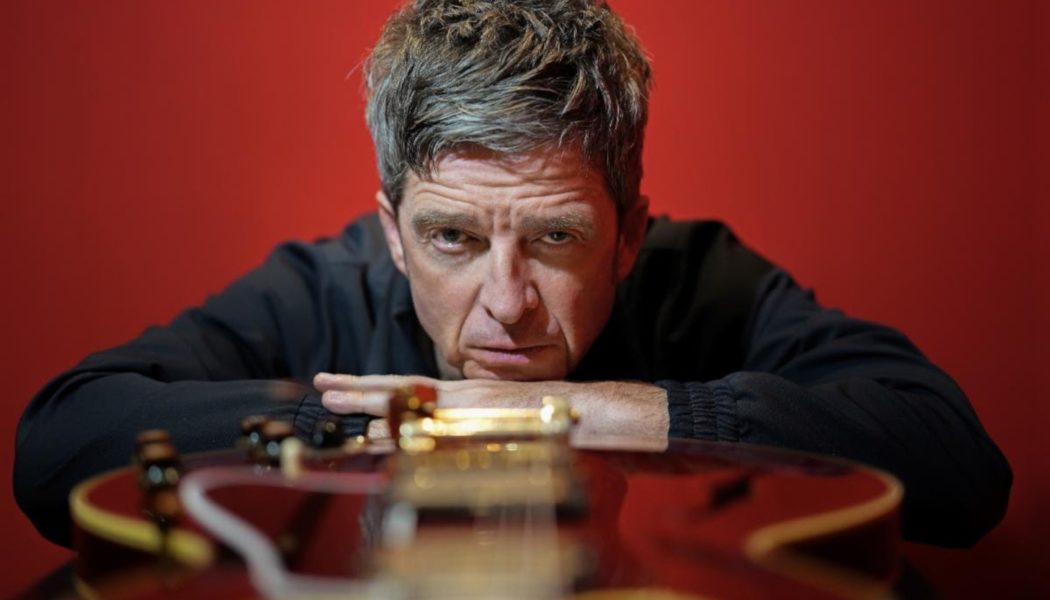


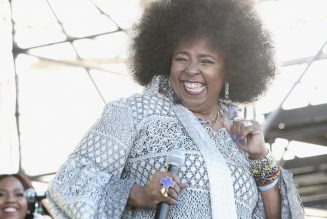
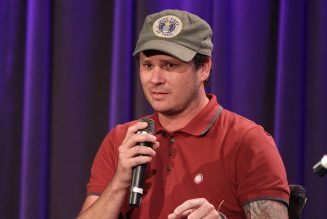

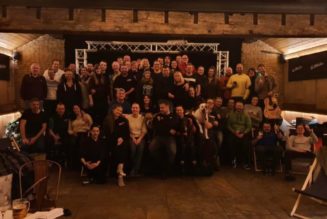
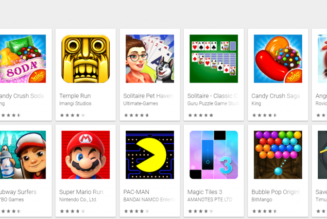
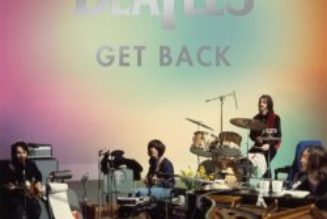
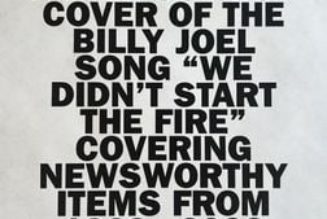
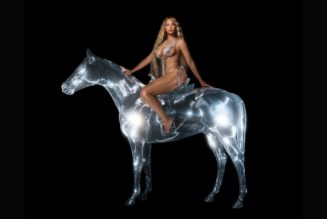
Tagged: alice in chains, billie joe armstrong, billy corgan, Blink-182, Brent Hinds, britt daniel, dave mustaine, deftones, dillinger escape plan, ed o'brien, fall out boy, green day, H.E.R, jack white, jerry cantrell, jim adkins, Jim James, Jimmy Eat World, kurt cobain, Lists, marcus king, mark hoppus, mastodon, Megadeth, mike mccready, mike ness, My Morning Jacket, nick valensi, Nirvana, noel gallagher, oasis, Omar Rodríguez-López, pearl jam, pete wentz, radiohead, rancid, Smashing Pumkpkins, Social Distortion, spoon, st vincent, tash sultana, The Mars Volta, the roots, the strokes, Tim Armstrong, tom delonge, Tool